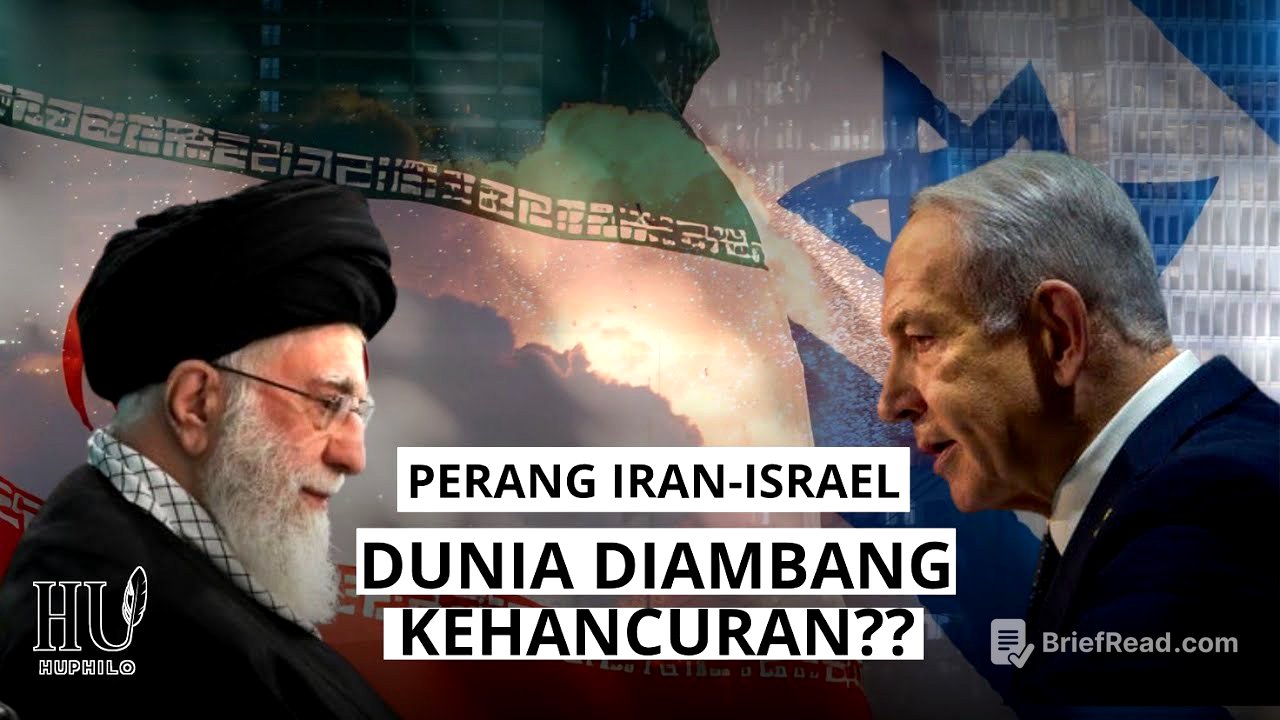TLDR;
This video explores the complex and evolving relationship between Iran and Israel, from their initial alliance in the mid-20th century to their current state of conflict. It examines the ideological shifts, proxy wars, cyber warfare, and direct military engagements that have shaped their dynamic, highlighting key events such as the Iranian Revolution, the Iran-Iraq War, and the 2006 Lebanon War. The video concludes by analyzing the aftermath of a hypothetical 12-day military conflict in June 2025, discussing its impact on regional stability, international perceptions, and the potential for future escalation.
- Initial alliance in the mid-20th century
- Proxy wars and cyber warfare
- Hypothetical 12-day military conflict in June 2025
From Allies to Enemies: The Genesis of Iran-Israel Relations [0:03]
The initial relationship between Iran and Israel was built on trust and mutual interests, dating back to Israel's independence in 1948. Iran was among the few countries in the region that did not openly oppose Israel, fostering a close network of cooperation driven by a shared fear of Arab power and aligned geopolitical interests. This collaboration involved intelligence exchanges, military training, and joint economic projects, with Iran supplying oil to Israel and Israel providing agricultural technology and military resources. This alliance, rooted in the "Alya peripheral doctrine," aimed to balance the power of Arab states by forming a coalition with non-Arab countries like Iran, Turkey, and Ethiopia.
The Turning Point: The Iranian Revolution and the Rise of Ideological Conflict [4:37]
The 1979 Iranian Revolution marked a turning point in Iran-Israel relations, transforming Iran from a pro-Western secular state into an Islamic republic under Ayatollah Khomeini. This ideological shift led to the severance of diplomatic ties and the portrayal of Israel as an extension of U.S. domination. Despite the anti-Israel rhetoric, a complex reality emerged during the Iran-Iraq War, where Israel secretly provided military aid to Iran through unofficial channels, viewing Saddam Hussein's regime as a greater threat. This pragmatic relationship was temporary, and after the war, anti-Israel sentiment resurfaced, with Iran supporting anti-Israel militant groups like Hezbollah.
Proxy Wars and the Axis of Resistance: A New Era of Conflict [8:23]
Following the Iran-Iraq War, Iran began to consolidate its power and project its influence abroad, leading to a new form of threat for Israel through proxy wars. Iran established a network of alliances with militant groups, forming the "axis of resistance" comprising Hezbollah in Lebanon, Hamas in Gaza, and Shiite groups in Iraq, all receiving financial support, training, and weapons from Iran. This strategy allowed Iran to exert constant pressure on Israel without direct military involvement, exemplified by the 2006 Lebanon War. Additionally, concerns over Iran's nuclear program intensified, with Israel viewing it as an existential threat and increasing diplomatic, economic, and intelligence efforts to halt its progress.
The Shadow War: Cyber Attacks and Covert Operations [11:09]
Entering the 2010s, the conflict between Iran and Israel transitioned into a hidden phase characterized by cyber attacks and covert operations. The Stuxnet cyber attack in 2010, attributed to U.S.-Israel cooperation, targeted Iran's nuclear facilities, slowing uranium enrichment. This marked a shift towards cyber warfare, with both countries engaging in attacks on critical infrastructure. Simultaneously, assassination operations targeted Iranian nuclear scientists, further escalating tensions. Iran responded by increasing support to Hezbollah and developing high-precision ballistic missiles, while Israel intensified intelligence activities in Iraq and Syria, preparing for potential open war.
Hypothetical Future: The 2025 Military Conflict and Its Aftermath [14:15]
In a hypothetical scenario, June 2025 sees Israel launching air strikes on Iranian nuclear facilities, leading to a direct and deadly conflict. Iran retaliates with missile and drone attacks on Israeli cities, prompting U.S. intervention with additional strikes on Iranian territory. This widens the conflict, drawing international condemnation and raising fears of a regional war. The 12-day engagement ends with a tense strategic uncertainty, impacting perceptions of Iran's power and exposing Israel's dependence on the U.S. Despite claims of destroyed nuclear facilities, reports suggest Iran's infrastructure can be restored, leading to increased international tensions and sanctions. The conflict underscores the interconnectedness of regional conflicts and the potential for further escalation.







![[Full Audiobook] The Body Keeps the Score: Brain, Mind, and Body in the Healing of Trauma | Part 3-5](https://wm-img.halpindev.com/p-briefread_c-10_b-10/urlb/aHR0cDovL2ltZy55b3V0dWJlLmNvbS92aS9XMGRqR0FEalMtOC9ocWRlZmF1bHQuanBn.jpg)

